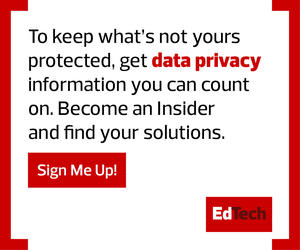After having devices in their possession for a year, students returning to classrooms are, in many cases, handing over their school-issued tech for the first time. Because districts went into emergency mode when the pandemic began, many IT leaders have not seen these laptops or tablets. Now, they’re dealing with the next chapter of one-to-one initiatives: cleaning students’ devices.
Part of this involves the literal sanitization of devices. Students ages 6 to 18 years old were given devices for remote learning, and now IT teams must find the best way to sanitize these laptops, tablets and peripherals — from wiping them down to cleaning crumbs out of keyboards.
But cleaning also means wiping the hard drive, resetting the device and ensuring all operating systems are up to date.
While IT professionals are less likely to worry about the physical wipe down, it’s the system reset that raises concerns about student privacy. What files and information might be living on a student’s school-issued device, and what happens if an adult on the school’s IT team comes across it?
Communicate Expectations and Instructions with Students
Because districts own school-issued devices, there is no expectation of student privacy. This should be communicated to students and their families at the beginning of the year. Sending out a reminder at the end of the year can also be particularly helpful.
“When you’re telling students, ‘Hey, you’re turning in your devices at the end of the school year, make sure there’s nothing on there that you don’t want anybody to see or know about,’ provide instructions,” says David Andrade, business development manager for Google services at CDW•G. “Show them how to clear their search history and how to clean off their hard drive.”
In a normal school year, the IT team should be able to install certain filters and protections on a student’s device, but that hasn’t been an option for many districts during the past 18 months. Between the crucial need to maintain education and supply chain shortages, some districts’ IT teams didn’t see the devices at all before they were given to students. Now, they’re trying to find ways to manage and reconfigure the devices in the safest ways possible.
Don’t Forget About the Cloud Accounts
One way IT professionals can avoid student privacy challenges is by wiping and reimaging devices without ever logging in. This will save the team from being exposed to any potential privacy concerns — and it can save time as well.
Wiping and reimaging will take care of anything that lives on the device itself. However, it won’t wipe files or browsing history that may live in a student’s cloud-based account.
At the end of the day, because the school owns the technology — including the cloud accounts — “there’s no such thing as privacy,” Andrade says. “It’s all open for the school. It’s all open for them to see.” The best approach is to make sure families with school-issued devices in their possession understand this and have the tools they need to clear personal information themselves.
DISCOVER: Configuration services help IT professionals deploy devices safely.












